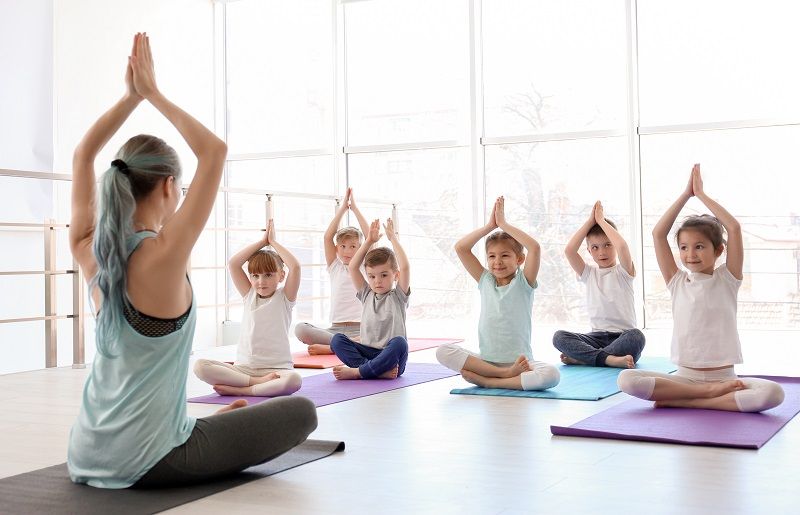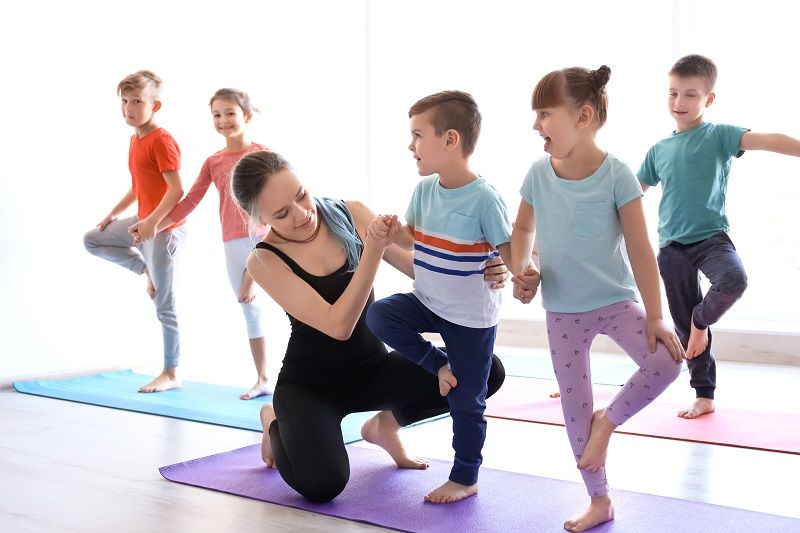The Benefits of Teaching Yoga to Your Kids
Yoga, a group of physical, mental, and spiritual practices originated in ancient India. It's the practice of integrating body, mind, and spirit to find inner harmony. Introduced in the US in the 1800s, yoga didn't really become mainstream until it hit television in 1961. Since that time, it's gained widespread acceptance. Fitness centers and YMCAs conduct yoga classes and you can find yoga studios throughout America, even in very small towns. Millions, including children, now enjoy the benefits that yoga can bring, and it continues to increase in popularity.

Key Benefits for Kids
In recent years, many have discovered that yoga has a positive impact on children as well as adults. It helps kids build concentration skills and learn healthy movement. Yoga provides an alternative to many kids' constant attachment to electronic devices and makes kids feel like part of a noncompetitive group. During yoga classes for children, they learn:
- Breathing - Yoga breathing exercises promote relaxation but can also energize kids, depending on what's being taught and how it's being presented. Different techniques help kids learn awareness of how their bodies feel as a result of deep breathing. Focus increases, lung capacity builds, stress is reduced, and hormones are released.
- Balance - Yoga poses teach balances skills that also help children develop core strength. They learn to quiet the mind and focus, even if surrounded by constant stimulation and chaos.
- Flexibility - Yoga poses stretch muscles. They become warm and more flexible, which means they can yield quickly when necessary without pulling on joints and bones, protecting the child from injury.
- Focus - Yoga helps kids become aware of, and control, their breathing and movements. They learn to focus and to breathe better. Their posture improves and they gain a quiet strength that translates into being more confident.
- Connection - Children learn to string yoga poses together, which helps teach them to move with ease, fluidity, and grace. As they advance, they learn to isolate different muscle groups and gain the understanding that movement is a connected, coordinated effort of muscles, bones, joints, and nerves.
- Relaxation Skills - Yoga teaches muscle control, including how to relax muscles. It's also meditative, which promotes calmness. Using techniques they learn in yoga, kids learn how to relax and stay calm regardless of the environment around them.
The Same but Different
While there are certainly similarities, yoga for kids is different than yoga for adults. Children's yoga often incorporates story and play, using all the different intelligences - linguistic, visual, kinesthetic, musical, logical, interpersonal and intrapersonal - in ways that engage mind, body, and spirit.

Basics of yoga, including stillness, balance, flexibility, focus, and peace are taught to children very differently than they are to adults. Children love to talk and move, so yoga for kids often incorporates sound and adds an auditory dimension to the yoga experience.
All of the elements of yoga-the breathing, concentration, poses, and the way kids learn to act and react to situations-leads to self-discovery and confidence. With the skills learned through yoga, kids are able to navigate today's busy, bustling world of continuous stimulation more easily and successfully.
Yoga allows both children and adults to enjoy real health benefits, increased mindfulness, and an improved ability to make connections.
